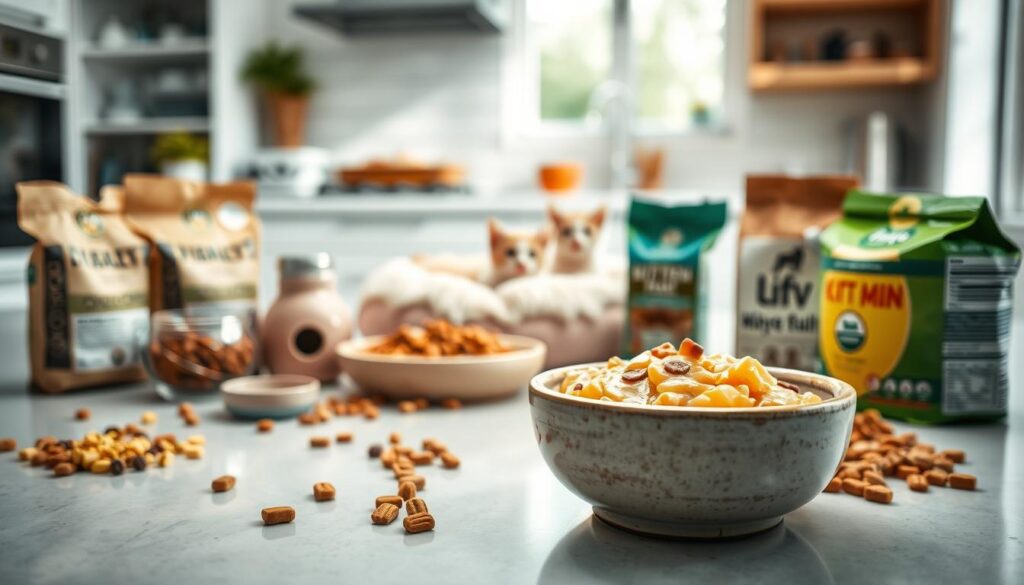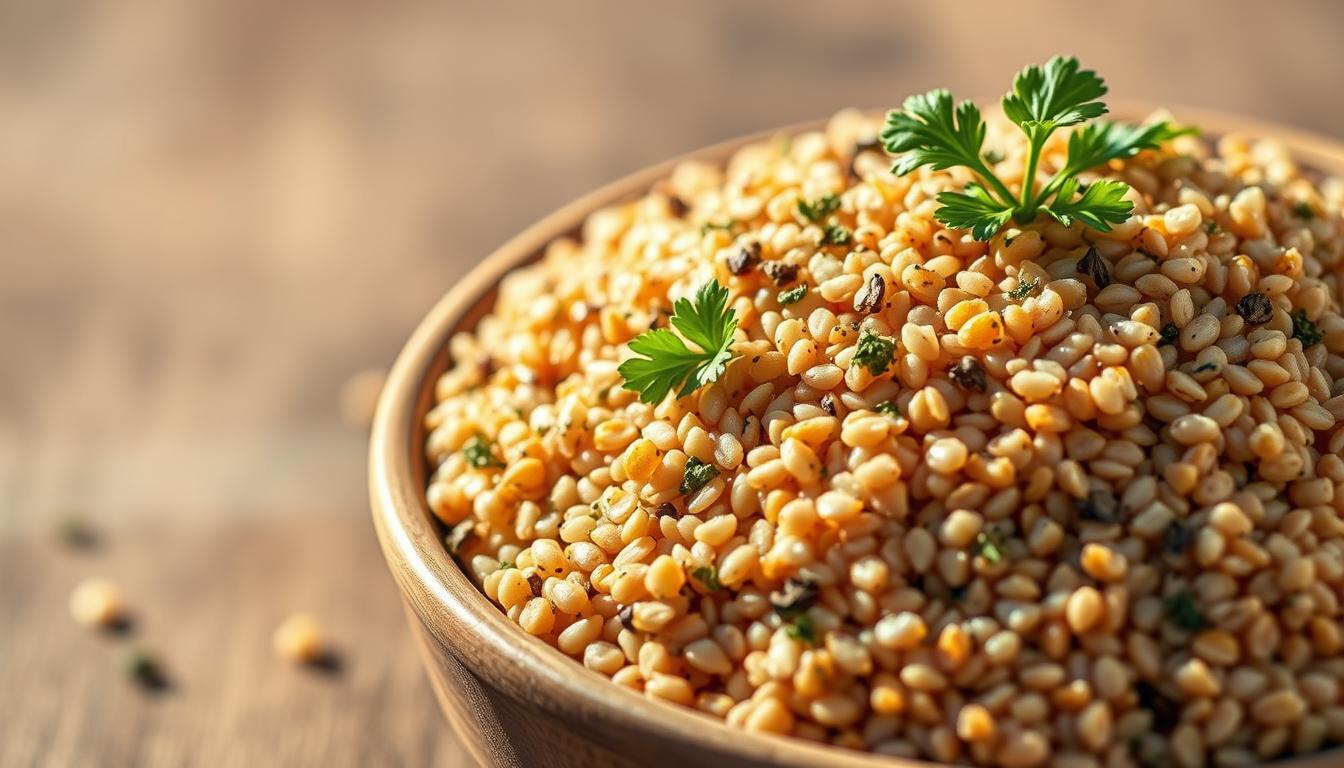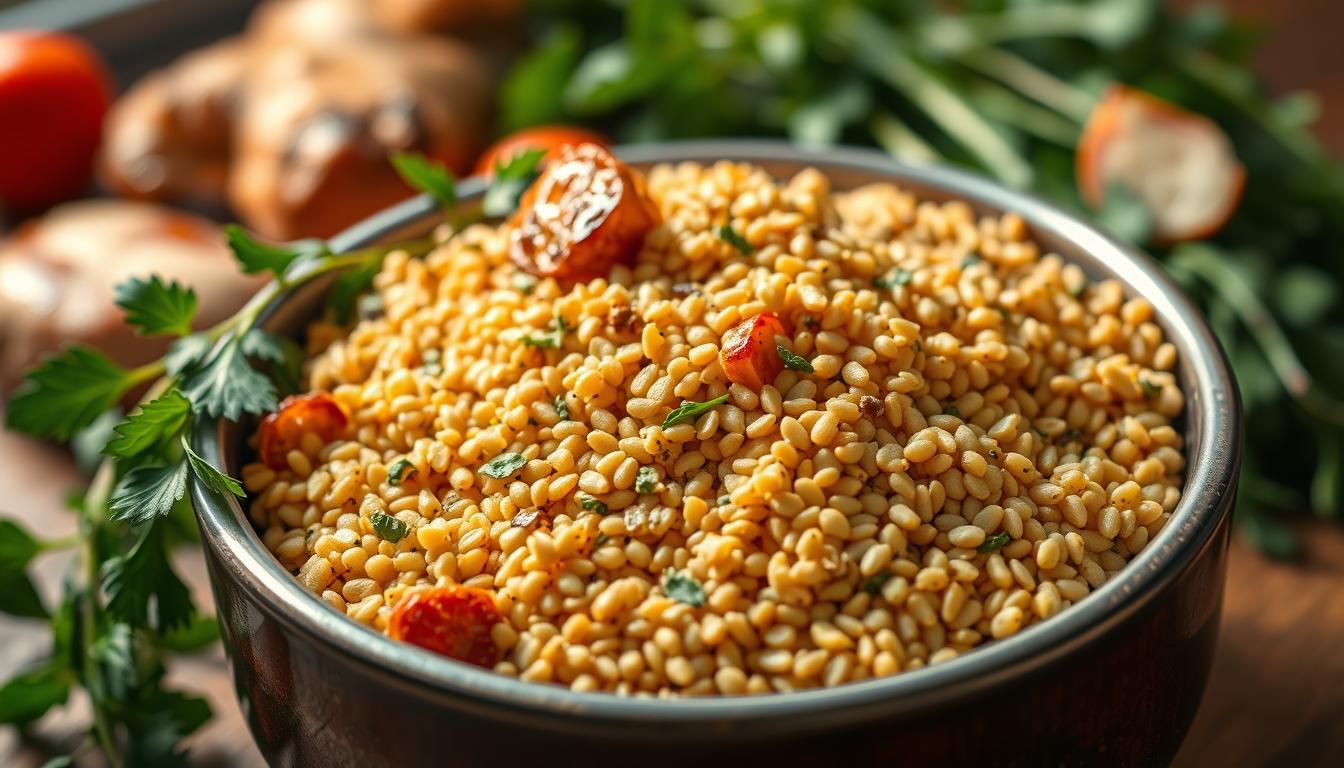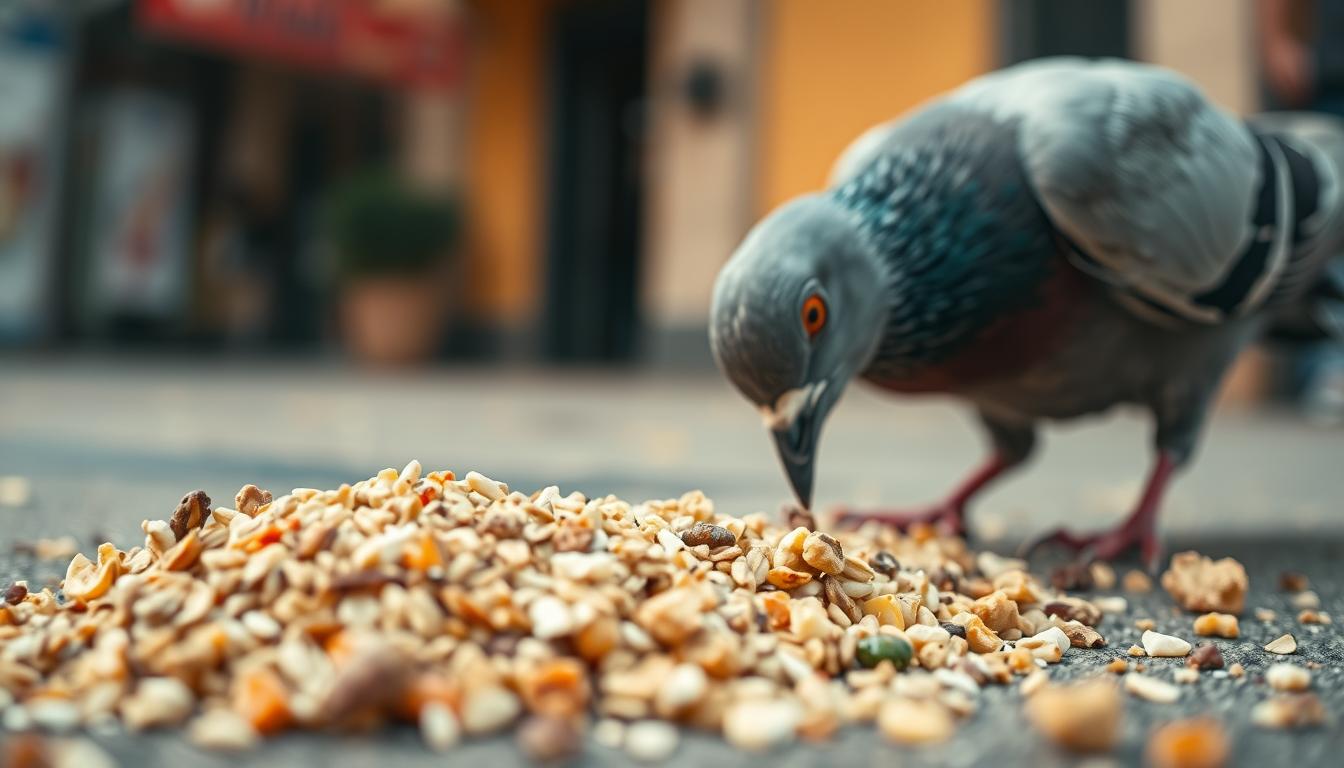Have you ever wondered if it’s safe to share your holiday ham with your curious cat? While ham might be a tasty treat for you, it could pose serious risks to your feline friend.
Ham is more than just a flavorful meat; it contains high sodium levels and additives that can be harmful to cats. As obligate carnivores, cats have unique dietary needs, and improper foods can lead to health issues.
This article explores the dangers of feeding ham to cats, safe preparation methods, and healthier protein alternatives. With insights from veterinarians, we’ll guide you in making informed decisions about your pet’s diet.
Table of Contents
Understanding Cats and Their Dietary Needs
Cats are unique animals with specific nutritional requirements. As obligate carnivores, they thrive on diets rich in animal-derived nutrients.
Their bodies are designed to process high amounts of protein, which is essential for maintaining muscle health and energy levels. Unlike humans, cats cannot survive without meat, as they require specific amino acids found only in animal tissue.
Cats as Obligate Carnivores
Cats require a diet rich in protein from animal sources. Their digestive system is optimized to break down meat efficiently.
Commercial cat food is formulated to provide complete nutrition, ensuring all essential nutrients are present in the right proportions. These products are designed to meet the dietary needs of cats.
The Importance of a Balanced Diet
A balanced diet is crucial for maintaining your cat’s health. Even small changes in nutrient levels can affect their well-being.
High-quality cat food ensures your pet gets the right mix of protein, vitamins, and minerals. This balance is vital for their overall health and longevity.
Can Cats Have Ham? Evaluating the Risks and Reality
Ham is a tempting treat for many pets, but is it safe for your cat? While ham offers some nutritional value, it also carries potential risks that pet owners should be aware of.
What Makes Ham Attractive to Cats
Cats are naturally drawn to high-protein foods, and ham’s strong aroma can be irresistible. The high protein content in ham makes it appealing, as cats are obligate carnivores requiring a diet rich in animal-based nutrients.
Key Nutritional Insights
Ham provides essential amino acids like taurine, which is vital for feline heart health and vision. However, processed ham is often high in sodium and contains artificial additives that can harm your cat. Fresh, home-cooked ham is a safer option than deli-processed varieties, but even then, portion control is crucial to avoid health issues.
While ham might seem like a harmless treat, it’s important to consider the broader dietary needs of your pet. Cats require a balanced diet that meets their specific nutritional requirements, and human foods like ham can disrupt this balance if not handled carefully.
Health Concerns Associated with Ham for Cats
Feeding your cat ham can lead to serious health issues that every pet owner should be aware of. While ham might seem like a harmless treat, it contains high levels of sodium and additives that can be detrimental to your cat’s well-being.
High Sodium and Its Effects
Ham is typically cured with salt, which makes it high in sodium. For cats, excessive sodium can lead to hypertension and heart health issues. Even small amounts of high-sodium foods can cause blood pressure spikes, which may result in cardiovascular problems over time. It’s crucial to limit your cat’s sodium intake to prevent these risks.
High sodium intake can also lead to dehydration in cats, as their bodies struggle to process the excess salt. This can put additional strain on their kidneys, potentially leading to long-term kidney damage if not managed properly.
Risks from Additives and Spices
Processed ham often contains additives and spices that are harmful to cats. Ingredients like garlic and onion are particularly dangerous, as they belong to the Allium family and can cause oxidative damage to a cat’s red blood cells. This can lead to anemia and other serious health complications.
In addition to these spices, many hams are seasoned with other seasonings that can cause gastrointestinal upset in cats. Symptoms may include vomiting, diarrhea, and lethargy. These reactions can range from mild to severe, depending on the type and amount of additives consumed.
It’s important to be cautious about introducing ham into your cat’s diet. While it might seem like an easy treat, the risks associated with sodium and additives far outweigh any potential benefits. Always prioritize your cat’s health by sticking to a balanced, nutritionally complete cat food and consulting with your veterinarian before making any changes to their diet.
Safe Ways to Introduce Ham to Your Cat
If you’re considering sharing ham with your cat, it’s important to do so safely. While ham can be a treat, improper preparation can pose risks. Here’s how to introduce it safely.
Selecting Raw Over Processed Ham
Opt for raw, unseasoned ham to avoid harmful additives. Processed ham often contains high sodium and spices that can harm your cat. Raw ham provides essential nutrients like protein and vitamins without added risks.

When selecting raw ham, choose lean cuts to minimize fat intake. This reduces the risk of obesity and pancreatitis in cats.
Cooking Methods for a Safe Treat
Cooking ham thoroughly ensures it’s free from bacteria. Bake or boil it without adding salt or spices. Plain cooking preserves nutrients while keeping your cat safe.
Portion control is crucial. Offer small, bite-sized pieces, ensuring they don’t exceed 10% of your cat’s daily calories. Overfeeding can lead to health issues like obesity and digestive problems.
Limit ham to a rare treat, no more than once a week. Always consult your veterinarian before making dietary changes, especially for cats with health conditions.
Feeding Guidelines and Portion Control
When it comes to sharing ham with your cat, portion control is key. While ham can be a tasty treat, it should never replace your cat’s regular, balanced diet.
Proper Serving Sizes and Frequency
A safe serving size for your cat is about a 1-inch cube of ham, cut into smaller pieces. This small amount ensures your cat gets a taste without overloading their system with sodium and additives.
Ham should only be offered 2-3 times a week at most. Overfeeding can lead to nutritional imbalances and health issues like obesity or digestive problems. Remember, treats like ham should make up no more than 10% of your cat’s daily calories.
Measuring portions accurately is crucial. Use a food scale or measuring cups to avoid giving too much. It’s easy to overfeed, thinking “more is better,” but this can harm your cat’s health in the long run.
Maintaining a balanced diet is essential. At least 90% of your cat’s calories should come from high-quality cat food that meets AAFCO standards. This ensures your pet gets all the necessary nutrients without relying on treats like ham.
When introducing ham as a treat, transition slowly. Start with a tiny piece and monitor your cat’s reaction. If they show signs of discomfort, it’s best to avoid ham altogether. Always consult your veterinarian before making changes to your cat’s diet.
Special Considerations for Kittens
Kittens are in a critical stage of growth, requiring a diet that precisely meets their developmental needs. Their delicate digestive systems and specific nutritional requirements make them more sensitive to certain foods.
Unique Nutritional Requirements for Growth
Kittens need a more controlled and carefully balanced diet compared to adult cats. Their rapid growth demands higher levels of essential nutrients like protein, vitamins, and minerals. Even small nutritional imbalances can affect their development.
Muscle meats like ham can disrupt the calcium and phosphorus balance in kittens. This imbalance can lead to skeletal issues and hinder proper growth.
Risks of Gastrointestinal Distress
Kittens are more prone to gastrointestinal upset due to their sensitive systems. Introducing ham, which is high in fat and sodium, can cause vomiting, diarrhea, and lethargy.
Recommendations for Feeding Kittens
It’s best to avoid ham entirely until kittens are older and more robust. Stick to a high-quality, complete kitten food formula designed for their unique needs. These foods provide the right balance of nutrients for healthy growth and development.

Exploring Alternative Protein Treats
When considering treats for your cat, it’s essential to explore safer, healthier options beyond ham. Chicken, turkey, and beef are excellent alternatives that provide the protein your cat needs without the high sodium and additives found in ham.
Chicken and turkey are lean meats, offering high-quality protein that supports muscle health. They are naturally lower in sodium and can be prepared without seasonings, making them a safer choice for your pet. Beef, while slightly higher in fat, is another good option when lean cuts are chosen.
These alternatives not only reduce the risk of health issues but also support your cat’s overall well-being. Proper preparation is key: cook them thoroughly without adding salt or spices. This ensures the meat remains nutritious and safe for your cat to eat.
Offering a variety of protein sources can keep your cat engaged and ensure they receive a broad range of nutrients. Remember, treats should never replace your cat’s balanced diet. Always consult your veterinarian before introducing new foods to your cat’s diet.
Conclusion
In conclusion, while ham can be an occasional treat for your cat, it’s crucial to approach it with caution. The high sodium content and potential additives in ham can pose significant health risks, making moderation essential. Always prioritize your cat’s balanced, nutrient-rich diet to ensure their overall well-being.
Safety measures are vital—opt for raw, unprocessed ham and keep portions small. Consider healthier alternatives like chicken or turkey, which offer high-quality protein without the sodium. For kittens, it’s best to avoid ham entirely and stick to specialized kitten food.
Before making any dietary changes, consult your veterinarian to ensure you’re making informed decisions. By doing so, you can help maintain your cat’s long-term health and happiness.
FAQ
What are the risks of feeding ham to cats?
Feeding ham to cats can lead to health issues due to high sodium content, which may cause dehydration and blood pressure problems. Additionally, additives and spices in ham can be harmful to your cat’s digestive system.
How does ham affect a cat’s blood health?
The high sodium in ham can impact your cat’s blood health by potentially leading to hypernatremia, a condition that disrupts the balance of fluids in the body, which can be dangerous if left untreated.
Can kittens eat ham?
Kittens should avoid ham due to their sensitive digestive systems and specific nutritional needs. Their diet should focus on nutrient-rich, balanced cat food to support healthy growth and development.
What is the maximum amount of ham a cat can safely eat?
It’s best to avoid ham altogether, but if you choose to offer it, a very small, infrequent portion of plain, unseasoned ham might be acceptable. Always consult your veterinarian first.
How does ham compare to other protein sources for cats?
Ham is less nutritious for cats compared to other protein sources like chicken or turkey. It’s high in sodium and low in essential nutrients, making it an unsuitable regular food option.
Are there any benefits to feeding raw ham to cats?
While raw ham provides protein, it lacks the necessary nutrients for a balanced diet and may contain harmful bacteria. Cooked, plain ham is safer but still not recommended as a regular part of your cat’s diet.
What are safe alternatives to ham as treats for cats?
Consider offering your cat small portions of cooked chicken or turkey, or high-quality cat treats. These options are healthier and more nutritionally balanced than ham.
How often can cats safely eat ham?
Cats should not eat ham regularly. If you choose to offer it, it should be a rare treat and only in very small amounts to avoid health complications.
Source Links
- 15 Toxic Human Foods You Should Never Feed Your Cat – https://www.dailypaws.com/foods-toxic-to-cats-7494337
- What To Do If Your Cat is Seizing | Central Broward Animal Hospital – https://centralbrowardvet.com/blog/cat-is-seizing/
- Keep Your Cat Safe—Why Ham Is Not the Best Treat – https://www.thesprucepets.com/can-cats-eat-ham-8736310
- Can Cats Have Ham? – https://basepaws.com/cat-insider/can-cats-eat-ham
- Can Cats Eat Ham | Tips for Feeding Cats Ham Safely – https://felinefancy.co.uk/blogs/cat-care-tips/can-cats-eat-ham?srsltid=AfmBOoqUGwPW6sL45V2E5c1QNIs-8OSJZXbD0d4NkJbUR3PolyHu1Nuo
- Ham for Cats: Safe or Risky? Nutrition Guide | Bailey’s CBD – https://baileyscbd.com/blogs/cat-nutrition/ham-and-cats-dietary-considerations?srsltid=AfmBOoru1GdLoEmBqaiha9abIU-bIMk_elruNHG1rU8wAu39dyb-Sphc
- What your cat should not eat – https://www.petplan.co.uk/pet-information/cat/advice/what-your-cat-should-not-eat/
- Ham for Cats: Safe or Risky? Nutrition Guide | Bailey’s CBD – https://baileyscbd.com/blogs/cat-nutrition/ham-and-cats-dietary-considerations?srsltid=AfmBOoqr8oxZBJgHlpyzbdqUel56tsM3TWTsYXU-LFYKI1BO7WE6YAdk
- 13 Holiday Foods That Are Dangerous to Cats – https://www.petmd.com/cat/nutrition/holiday-foods-dangerous-to-cats
- Can Cats Eat Ham | Tips for Feeding Cats Ham Safely – https://felinefancy.co.uk/blogs/cat-care-tips/can-cats-eat-ham?srsltid=AfmBOordj3JmsKuI-4gjqgLQCQgQJshpVEXvzO-6IEvTABaPZ_av-xeX
- Can Cats Eat Ham? Exploring The Risks Of Processed Meats | Cat Boarding Hotel Laguna, Mission Viejo, Anaheim, Santa Ana, CA | Cats Luv Us – https://www.catsluvus.com/cat-food/can-cats-eat-ham-exploring-the-risks-of-processed-meats/?srsltid=AfmBOop2d_MaI81kGBKQ1WjX3v8nROiBW335RvcuUgP2WlQPM-jY6pp8
- Ham for Cats: Safe or Risky? Nutrition Guide | Bailey’s CBD – https://baileyscbd.com/blogs/cat-nutrition/ham-and-cats-dietary-considerations?srsltid=AfmBOordut3nFkcHmNgj9h3lzGMUqqt8zSIE9efFBzzY-Q-pKvo9MtMo
- Can Cats Eat Ham | Tips for Feeding Cats Ham Safely – https://felinefancy.co.uk/blogs/cat-care-tips/can-cats-eat-ham?srsltid=AfmBOorxqYOhUSt8JIghnoCJTOUJOgZAAHE73EKJdx-wzWm1afABr-Au
- How Much Wet Food Does a Cat Need Every Day? – https://www.thesprucepets.com/how-much-canned-food-to-feed-554404
- Ham for Cats: Safe or Risky? Nutrition Guide | Bailey’s CBD – https://baileyscbd.com/blogs/cat-nutrition/ham-and-cats-dietary-considerations?srsltid=AfmBOoqyhHFgFl3kB-VUcnhZMpvmcm8AOQx_wC5qM0rj6pAudOIfBZAW
- Can Cats Eat Ham? Why Ham Isn’t the Best Choice for Your Little Carnivore – https://www.yahoo.com/lifestyle/cats-eat-ham-why-ham-060000590.html
- Ham for Cats: Safe or Risky? Nutrition Guide | Bailey’s CBD – https://baileyscbd.com/blogs/cat-nutrition/ham-and-cats-dietary-considerations?srsltid=AfmBOoqJr9w45cHK5LHd1CCIlsfNyjUGwYEFy8qiNXDiw62OAJFh7Bnh
- Can Cats Eat Ham? Exploring The Risks Of Processed Meats | Cat Boarding Hotel Laguna, Mission Viejo, Anaheim, Santa Ana, CA | Cats Luv Us – https://www.catsluvus.com/cat-food/can-cats-eat-ham-exploring-the-risks-of-processed-meats/?srsltid=AfmBOorBKmwnQlZxmJpHVdhZ44dcHzpJ8HiGf4nnqUVgyq6f68I-TPYE
- Can Cats Eat Ham? | Spot® – https://spotpet.com/blog/cat-tips/can-cats-eat-ham
- Can Cats Have Ham? – https://cooperpetcare.com/can-cats-have-ham/




